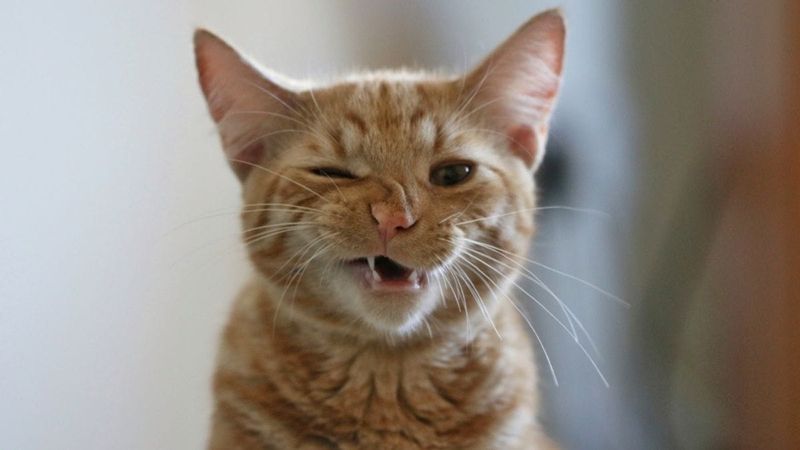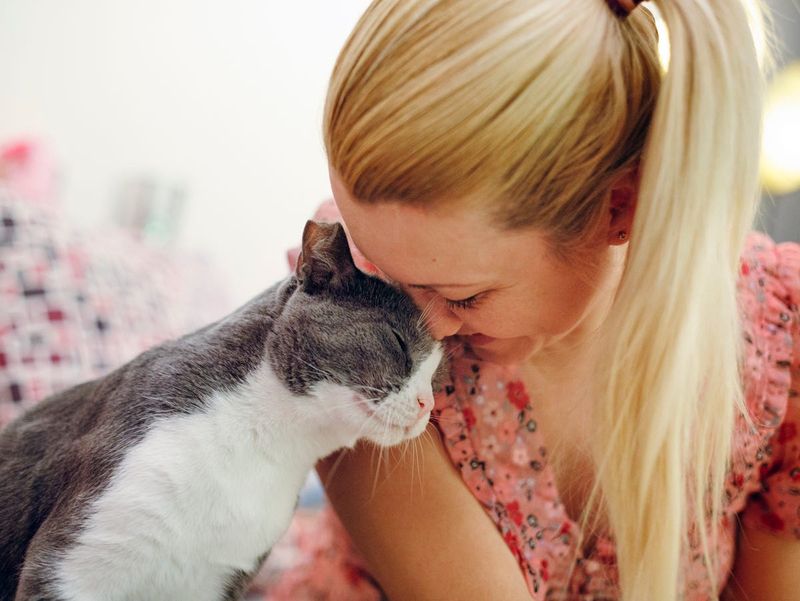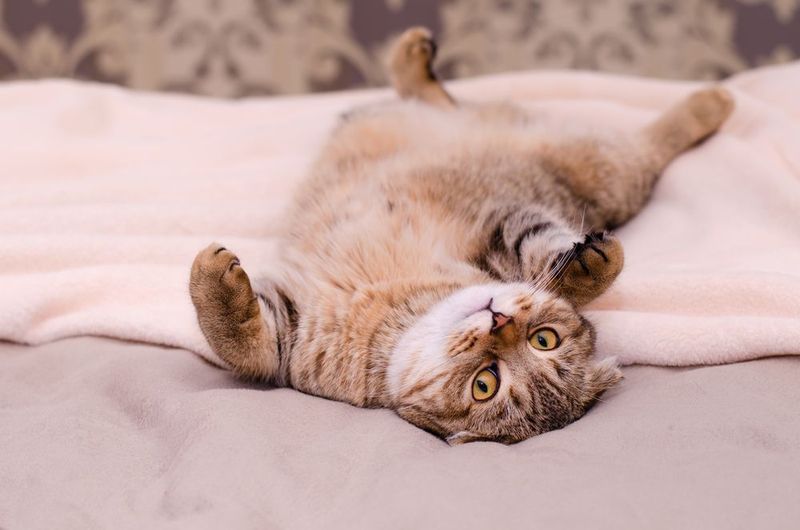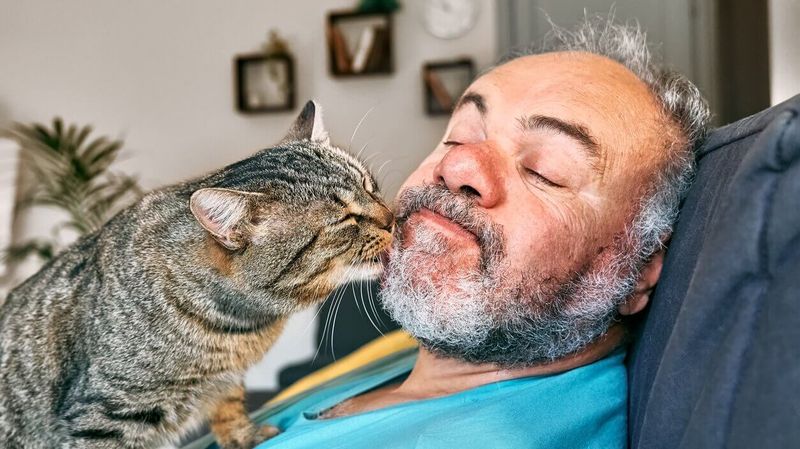📖 Table of Content:
While dogs often express affection through loud barks, wagging tails, and constant physical closeness, cats lean toward a subtler, more sophisticated language of love. To the casual observer, it might even seem like they don’t care—but nothing could be further from the truth.
Feline affection is an art form—measured, graceful, and intentional. These animals don’t shower attention indiscriminately. Instead, when a cat chooses to show you love, it’s because they feel safe and genuinely connected to you. Their methods may seem reserved, but each gesture carries deep meaning, often rooted in instinct and evolutionary behavior.
In this article, we’ll explore ten ways cats express affection without clinging or crowding. Whether you’re a lifelong cat owner or new to their world, these insights will deepen your appreciation for their quiet loyalty. Learn how to spot the signs that say “I love you” the feline way—quietly, cleverly, and on their own mysterious terms.
1. Slow Blinking
Far from being just a sleepy reflex, the slow blink is a cat’s way of showing trust and affection. When your feline friend fixes their gaze on you and blinks slowly, it’s akin to a relaxed, deliberate smile. This unspoken communication signals that they feel completely at ease in your presence. In the wild, direct eye contact can be seen as a challenge, so when a cat blinks slowly at you, it shows vulnerability and peace. Returning a slow blink can reinforce your bond and reassure your cat that they’re safe. It’s a gentle exchange that doesn’t require words or touch, only a shared moment of calm eye contact. Through this quiet ritual, cats say more than they ever could with meows or purrs.
2. Head Bunting
With a soft nudge from their forehead or cheek, cats offer one of their most endearing signs of affection. Known as head bunting, this action is deeply tied to their scent-marking behavior. By pressing their scent glands against you, they’re essentially claiming you as part of their inner circle. It’s a feline way of saying, “you belong with me,” without needing grand displays. This behavior is often reserved for those they feel most comfortable with, making it an honor to receive. A head bunt may seem brief or even accidental, but it carries emotional weight in the feline world. It marks you with love in the only way a cat knows how—subtly, but with sincerity.
3. Following You (But Casually)
Rather than hovering constantly, cats prefer to follow you with a kind of understated loyalty. You may notice them slinking into the room you’ve just entered or appearing quietly by the door as you move through the house. They don’t need to make a scene; their mere presence is a nod to their affection. Unlike dogs, who crave constant contact, cats are content to observe from a slight distance. They may settle in a nearby chair or perch on a windowsill where they can keep you in sight. This trailing behavior reflects a desire to be close without overwhelming either of you. It’s their way of saying, “I like being near you—but let’s keep it classy.”
4. Purring in Your Presence
Few sounds are as soothing as a cat’s purr, but it’s more than a sign of contentment—it’s also a form of connection. When a cat purrs while lying next to you or during gentle petting, they’re expressing trust and happiness. This rhythmic vibration is thought to have healing properties for cats and may even calm their humans. It’s a mutual exchange of peace and comfort, rooted in their earliest bonding moments with their mothers. Some cats even purr when you’re simply nearby, without any physical interaction at all. That kind of silent endorsement means they feel emotionally safe around you. Purring, in its soft resonance, is their ambient love song.
5. Kneading (“Making Biscuits”)
Using their paws in a rhythmic push-and-pull motion, cats sometimes knead soft surfaces—including you. This action originates in kittenhood, when they stimulated their mother’s milk flow during nursing. In adulthood, it becomes a self-soothing habit that’s only shared with those they trust. If your cat kneads your lap, it’s a deeply affectionate gesture wrapped in comfort and nostalgia. You might find it slightly painful if claws are involved, but rest assured, the intent is entirely loving. They’re saying, in their own tactile way, that you’re part of their safe space. It’s a behavioral hug encoded in muscle memory.
6. Tail Wrapped Around You
Next time you feel a light touch or wrapping sensation from your cat’s tail, don’t brush it off—it’s a quiet show of love. Cats use their tails to communicate a range of emotions, and a gentle wrap is the equivalent of a handshake or an arm around your shoulder. This behavior is often seen between feline friends or a mother and her kittens. When directed at you, it means you’ve earned a place in their trusted social circle. It’s a small but deliberate way of including you in their world. Though fleeting, the gesture signals warmth, familiarity, and acceptance. A tail twined around your leg is their version of keeping you close.
7. Showing Their Belly
Unlike dogs who often seek belly rubs with enthusiasm, cats reveal their stomachs selectively and with care. When a cat rolls over and exposes their belly, it’s a sign of ultimate trust, not necessarily an invitation to touch. The abdomen is a vulnerable area, and only those they feel safe around ever get to see it. Some cats may allow gentle strokes, while others simply want you to appreciate the gesture. Interpreting this move correctly shows that you understand their emotional language. It’s an offering of trust laid out plainly and vulnerably on the floor. Take it as one of the highest compliments a cat can give.
8. Grooming You
Licking is more than a grooming habit—it’s also a social behavior among cats. When your feline begins licking your hand, arm, or even your hair, they’re treating you as part of their family unit. This act stems from their instinct to care for their loved ones by keeping them clean. While it may feel odd, especially if the tongue is a bit scratchy, it’s a heartfelt action. Your scent, your skin, and your presence are being folded into their sense of home. They may also nibble lightly in between licks, which is a gentle form of grooming. Through this process, they’re blending their world with yours.
9. Sleeping Nearby (But Not On Top of You)
Your cat may never curl up in your lap, but if they nap in the same room, it’s no coincidence. Cats choose their resting spots carefully, always on the lookout for safety and comfort. When they sleep near you, they’re acknowledging your presence as reassuring. They may claim a sunbeam on the floor or the foot of your bed as their chosen spot. Unlike dogs, who often crave full-body closeness, cats respect personal space while still showing affection. Their preference for proximity over pressure speaks to their unique style of bonding. It’s companionship at a respectful, feline distance.
10. Bringing “Gifts”
Perhaps the most misunderstood form of affection comes in the shape of a “gift.” Whether it’s a toy mouse, a sock, or the occasional unlucky insect, these offerings are not random. Cats are natural hunters, and bringing you something is part of their instinct to share resources with their social group. Even indoor cats display this behavior with their favorite toys, often dropping them at your feet. It’s a gesture meant to include you in their activities and show that they care. While the contents may not always be welcome, the intention is deeply rooted in connection. To a cat, gift-giving is love in action.










